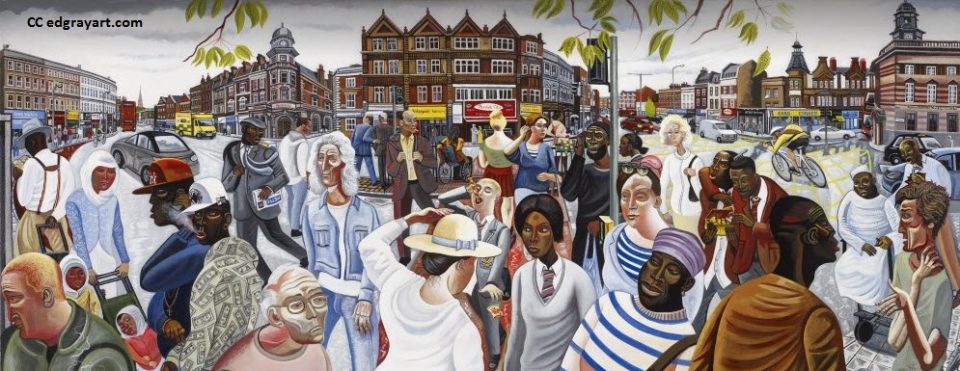Tags
The following post is entirely generated using AI. It is based on the seventh AI Conversation session that took place today where Dave White answered questions around the topic, Has AI Stolen Our Creative Labour? The session was recorded in MS Teams, which automatically created a transcript. The transcript was summarised in Claude and the blog post was generated using ChatGPT4. Image created by Adobe Firefly

In a world increasingly shaped by artificial intelligence (AI), the line between human and machine-generated creativity is blurring. This was the focus of a thought-provoking discussion titled “AI Conversations: Has AI Stolen Creative Labour?” held on November 17, 2023, featuring David White, Dean of Academic Strategy for Online Learning at the University of the Arts London (UAL).
Introducing David White and His Journey
The session, led by Chris Rowell, began with an introduction to David White. With a rich background in digital education, including a stint at the University of Oxford, White has been pivotal in shaping how teaching and learning evolve in the digital age. His “visitors and residents” conceptual framework has influenced many. Currently, at UAL, he is driving the development of fully online creative arts courses. Not just an academic, Dave also indulges in creating abstract art, showcasing his dual roles in both creating and theorizing about art in the digital age.
Understanding AI’s Role in Art Creation
When asked about AI’s involvement in art creation, Dave demystified the process. He clarified that AI, at its core, is a sophisticated set of algorithms processing vast datasets, often sourced questionably from the web. The emergence of AI art hinges on two factors: the explosion of available data and the plummeting costs of computing power. AI’s ability to discern patterns in data and generate outputs based on these patterns is often misunderstood as ‘creative thinking’, but Dave insists it’s more a statistical marvel than a creative genius.
Copyrights, Ethics, and the Artist’s Plight
The conversation then delved into the contentious realm of copyrights in art. White expressed concern over AI’s ability to mimic an artist’s style, potentially infringing on intellectual property rights. The ethical implications of AI-generated art are manifold, considering questionable data sourcing, overhyped capabilities, and questionable labor practices in AI training.
The Industrialization of Visual Culture and AI’s Impact
A significant point of discussion was the potential industrialization of visual culture due to AI. Dave speculated on an increasing divide between elite human artists and AI systems churning out high-volume commercial content. However, he emphasized the enduring value of hand-made art, rooted in its scarcity and creativity.
Fair Use, Plagiarism, and the Future of Creativity
On fair use and plagiarism, Dave noted that copyright law already addresses artists building on existing influences, akin to what AI does today. He suggested that AI challenges our notions of originality and authorship, potentially liberating us to focus on higher-order thinking and meaning-making.
Concluding Thoughts: AI as a Tool, Not a Determinant
In closing, Dave stressed that AI, for all its capabilities and pitfalls, remains a tool. Its impact depends on how we, as a society, choose to wield it. He highlighted the critical role of educational institutions in fostering balanced perspectives on AI, considering ethical, cultural, and political factors.
In essence, “AI Conversations: Has AI Stolen Creative Labour?” provided a nuanced view of the intersection of AI and creativity. As we forge ahead in this AI-augmented era, the dialogue between technology and human creativity will undoubtedly continue to evolve, posing new challenges and opening up uncharted avenues for artistic expression.
